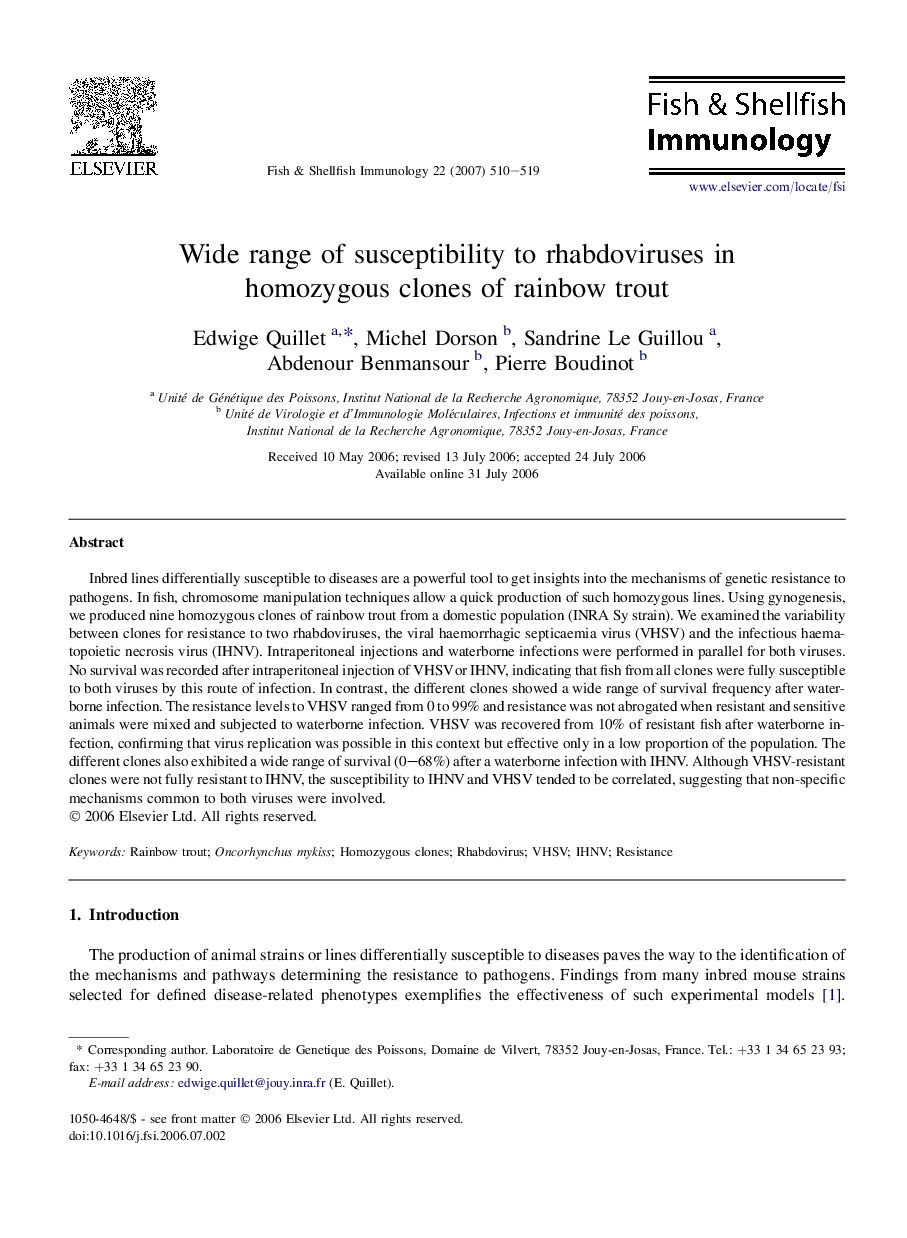| Article ID | Journal | Published Year | Pages | File Type |
|---|---|---|---|---|
| 2433714 | Fish & Shellfish Immunology | 2007 | 10 Pages |
Inbred lines differentially susceptible to diseases are a powerful tool to get insights into the mechanisms of genetic resistance to pathogens. In fish, chromosome manipulation techniques allow a quick production of such homozygous lines. Using gynogenesis, we produced nine homozygous clones of rainbow trout from a domestic population (INRA Sy strain). We examined the variability between clones for resistance to two rhabdoviruses, the viral haemorrhagic septicaemia virus (VHSV) and the infectious haematopoietic necrosis virus (IHNV). Intraperitoneal injections and waterborne infections were performed in parallel for both viruses. No survival was recorded after intraperitoneal injection of VHSV or IHNV, indicating that fish from all clones were fully susceptible to both viruses by this route of infection. In contrast, the different clones showed a wide range of survival frequency after waterborne infection. The resistance levels to VHSV ranged from 0 to 99% and resistance was not abrogated when resistant and sensitive animals were mixed and subjected to waterborne infection. VHSV was recovered from 10% of resistant fish after waterborne infection, confirming that virus replication was possible in this context but effective only in a low proportion of the population. The different clones also exhibited a wide range of survival (0–68%) after a waterborne infection with IHNV. Although VHSV-resistant clones were not fully resistant to IHNV, the susceptibility to IHNV and VHSV tended to be correlated, suggesting that non-specific mechanisms common to both viruses were involved.
